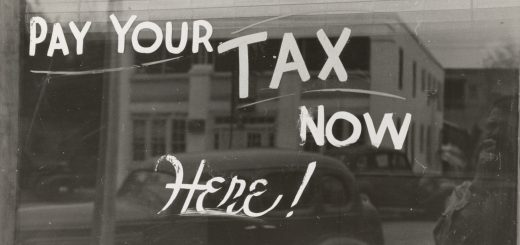Gladwin Realty Corporation v. Canada : Abusing Specific Anti-Avoidance Rules in Partnerships

Since the creation of the Income Tax Act (“ITA“), there have been taxpayers trying to avoid taxes in any manner possible. Although taxpayers are free to arrange their matters in the most tax-efficient way, there is a line between “tax efficient” and “tax abusive” planning. The General Anti-Avoidance Rules (the “GAAR”), as defined in section 245 of the ITA, help courts draw this line.
One such GAAR case was Gladwin Realty Corporation v. Canada, 2020 FCA 142 [Gladwin FCA], recently decided by the Federal Court of Appeal (“FCA”). This was an appeal from a Tax Court of Canada (“TCC”) decision— Gladwin Realty Corporation v. Canada, 2019 TCC 62 [Gladwin TCC]—which was decided last year. The case concerned a private real estate corporation that engaged in a series of tax avoidance transactions. As a result, Gladwin Realty Corporation (the “Corporation”) received a large capital gain from selling a property. It then paid its shareholders the proceeds of this sale on a tax-free basis. The question faced by the FCA was whether the series of transactions violated the GAAR.
Facts
On August 8, 2007, the Corporation sold a piece of real estate in Ottawa that resulted in a capital gain of $23,346,822 (Gladwin TCC, paras 1-2). The Corporation wanted to distribute these capital gains to its shareholders on a tax-free basis. It planned to do this by inflating its Capital Dividend Account (“CDA”), a notional account of money that corporations can pay to their shareholders on a tax-free basis (Gladwin FCA, para 7).
The Corporation and its shareholders took the following steps to reach their goal (paras 7 – 14):
- February 6, 2007: Incorporated Gladwin GP Inc. (“GP”).
- March 1, 2007: Formed a partnership between GP and the Corporation, where the Corporation was a limited partner holding 99% interest and GP was a general partner holding 1% interest.
- April 10, 2007: Real estate assets from the Corporation were transferred to the partnership through a tax-free rollover, such that the partnership would realize the gain once it sold the Ottawa property.
- August 8, 2007: The partnership sold the Ottawa property and realized a capital gain of $23,346,822.
- August 8, 2007: The partnership lent $24,463,142 to Shabholdings Inc., the direct corporate shareholder of the Corporation.
- September 28, 2007: The partnership distributed $24,647,031 to the Corporation, partially satisfied by the promissory note provided by Shabholdings to the partnership in exchange for the loan of $24,463,142. This transaction changed the Adjusted Cost Base of the Corporation’s interest in the partnership to equal negative $24,311,654.
- October 1, 2007: The Corporation realized a deemed capital gain equal to the negative ACB it had on its partnership interest as a result of subsection 40(3.1) of the ITA. Because only 50% of capital gains are taxable, the tax-free portion of the capital gain is allocated to the Corporation’s CDA.
- October 1, 2007: The partnership allocated the capital gain from the Ottawa real estate sale of $23,346,822 to the Corporation. 50% of this capital gain was allocated to the Corporation’s CDA. As a result of these two transactions, the Corporation’s CDA stood at $23,829,237.
As a result of these transactions, the Corporation paid a tax-free capital dividend to its shareholders equal to $23,829,237. The Corporation then elected a capital loss of $24,311,653 under subsection 40(3.12) of the ITA (para 16). The partnership and the Corporation ceased operations and have since remained inactive (para 17).
These transactions allowed the Corporation to pay out the capital gains from the sale of its Ottawa property to its shareholders on a tax-free basis. Without this planning, the Corporation could have only distributed half of the profits tax-free.
On March 27, 2017, the Corporation received a Notice of determination that reduced the amount it could distribute tax-free through its CDA to $12,153,827. The Canada Revenue Agency claimed that the Corporation’s inflation of its CDA was a violation of the GAAR (para 19).
The GAAR
Canada Trustco Mortgage Co v. R, 2005 SCC 54 [Canada Trustco], provides courts with the current test for the GAAR. In Canada Trustco, the Supreme Court of Canada (“SCC”) devised a three-step test to determine whether a transaction violates the GAAR:
- Is there a tax benefit arising from a transaction or series of transactions of which the transaction is part (Canada Trustco, para 17)?
- Is the transaction considered an avoidance transaction within the meaning of subsection 245(3) of the ITA — that is, an avoidance transaction is any transaction that,
- but for this section, would result, directly or indirectly, in a tax benefit; or,
- is part of a series of transactions, which series, but for this section, would result, directly or indirectly, in a tax benefit (para 17).
- Whether the avoidance transaction is abusive as per subsection 245(2) of the ITA. The Court in Canada Trustco broke subsection 245(2) into two parts:
- Interpret the provisions giving rise to a tax benefit to determine their object, spirit, and purpose.
- Determine whether the transaction or series of transactions falls within or frustrates the purpose of said provisions (para 55).
If a court finds that a transaction or series of transactions meets all three steps, then the court will find the taxpayer to be in violation of the GAAR.
Tax Court of Canada Decision
At the TCC, Justice Hogan found in favour of the Crown. The Corporation conceded that there were a tax benefit and an avoidance transaction. Therefore, the main contention was whether the avoidance transaction was abusive. Justice Hogan first determined the object, spirit, and purpose of the provisions at hand. He then determined whether the Corporation’s avoidance transactions frustrated the purpose of the provisions.
Under the ITA, a CDA is generally allowed through subsections 83(2), 89(1) and 184(2). Justice Hogan explained that the purpose of a CDA was to allow private corporations to keep track of tax-free surpluses so that they can distribute said amounts to individual shareholders without tax (Gladwin TCC, paras 39 and 41-42). The CDA provisions of the ITA try to promote integration between the different types of business structures allowed under Canadian law, such that tax consequences do not necessarily affect an individual’s choice of business structure.
The TCC also stated that subsection 40(3.1) was enacted to end tax shelter arrangements that took advantage of partnership interests (paras 49-51). Justice Hogan concluded that “purpose and effect of subsection 40(3.1) is to dissuade taxpayers from extracting tax-free funds from a partnership in excess of their investment in the partnership” (para 58). Subsections such as 40(3.1) are commonly referred to as specific anti-avoidance rules.
In the second part of the Tax Court’s analysis, Justice Hogan considered whether the transaction fell within or frustrated the purpose of said provisions. That is, did the Corporation frustrate the underlying rationale of the CDA by triggering a second capital gain and then electing a capital loss via subsections 40(3.1) and 40 (3.12) to offset the capital gain? (para 68).
Justice Hogan found that the avoidance transactions were inconsistent with the rationale of subsections 40(3.1) and 40(3.12) and the provisions outlining the ITA’s CDA regime. Therefore, the Corporation had violated the GAAR.
At the Federal Court of Appeal
At the FCA, Justice Noël, with Justice de Montigny and Justice LeBlanc concurring, dismissed the Corporation’s appeal and found in favour of the Crown. The Court recognized that both sides had already agreed that there were a tax benefit and an avoidance transaction. However, the Court noted that there was never an agreement on what the benefit was. Therefore, with agreement from the Corporation and Crown, the FCA identified that the dividends paid to non-corporate shareholders (i.e., individual shareholders of Shabholdings) was the tax benefit (Gladwin FCA, para 49). Thus, the central question was whether the payment of capital dividends for the benefit of the non-corporate shareholders frustrated the provisions of the ITA, which were relied on to achieve such a result (para 50).
Determining the Object, Spirit, and Purpose
The Court went on to determine the objection, spirit, and purpose of
- Subsections 83(2), 89(1) and 184(2): the CDA Regime; and
- Subsections 40(3.1) and 40(3.12).
The FCA reiterated that the purpose of subsections 83(2), 89(1) and 184(2) was to promote integration (para 62). Then, with regard to subsections 40(3.1) and 40(3.12), the Court stated that subsection 40(3.1) is a specific anti-avoidance measure to prevent tax avoidance and that subsection 40(3.12) provided corresponding relief (para 64).
Was there Abuse?
The Court started with agreement with the Corporation that
the Court must give effect to the transactions as they unfolded, and refrain from assessing the abuse on the basis of the overall result achieved. What must be shown is that the provisions used to achieve this result, when construed with a focus on their object, spirit and purpose, reveal a clear underlying rationale that was frustrated by the series of transactions (para 70).
With this in mind, the Court noted that it is important to track how the Corporation’s CDA evolved as the series of transactions the Corporation made in 2007 progressed.
The Court first analyzed how the Corporation paid out a capital dividend that ended up in the hands of its non-corporate shareholders, while an approximately $12,000,000 deficit was left in the Corporation’s CDA. Generally, corporations have to erase any CDA deficit before it can declare future tax-free capital dividends. But in this case, the Corporation ceased operations after it declared the capital dividend. Therefore, it could never repay its CDA deficit.
The Court asked whether the Corporation could, under subsections 40(3.1) and 40(3.12), pay a capital dividend before electing the offsetting loss formed in the partnership. Justice Noël ultimately determined that the words of the subsections and their underlying rationales did not prevent this.
However, Justice Noël felt the fact that the Corporation suffered a CDA deficit by electing a capital loss that would never be replenished, while preserving a tax benefit, defeated the underlying rationale of the CDA regime: “Specifically, the extra $12,000,000 that was distributed tax-free will never be offset by the qualifying amounts that would have to be renounced on a go-forward basis in order to make up the deficit” (para 84). Further, he found that the use of subsections 40(3.1) and 40(3.12) to achieve such a result were misuses of the two provisions. These reasons allowed the Court to ultimately dismiss the Corporation’s appeal.
Will the Supreme Court of Canada Grant Leave?
Tax cases are not commonly granted leave to the SCC. I do not see Gladwin Realty Corporation v. Canada as an exceptional case that will receive leave. There was some disagreement between the trial and appeal courts, but also plenty of agreement.
Although the TCC and FCA both dismissed the Corporation’s appeal, they came to their decisions in different ways. Justice Hogan at the TCC found that the Corporation’s avoidance transactions directly violated the intentions of subsections 40(3.1) and 40(3.12). In contrast, Justice Noël found that the transactions did not violate the two subsections’ underlying rationale. For the FCA, the defeat of the CDA regime’s underlying rationale led to the Corporation’s GAAR violation. However, the FCA still found that the overall result violated the underlying rationales of subsections 40(3.1) and 40(3.12). I maintain that this difference is not enough for the SCC to find a reason to grant leave.
In terms of agreement, both courts felt that the transactions ultimately defeated the underlying rationale of the CDA provisions of the ITA. Both courts found similarities between the Corporation’s avoidance transactions and the avoidance transactions in Triad Gestco Ltd. v. Canada, 2012 FCA 258, a case decided in favour of the Crown and which did not get leave to appeal to the SCC (Gladwin TCC, para 87; Gladwin FCA, para 83). I reason that these agreements and the case’s similarities to Triad Gestco overshadow any disagreements between the courts.








Join the conversation